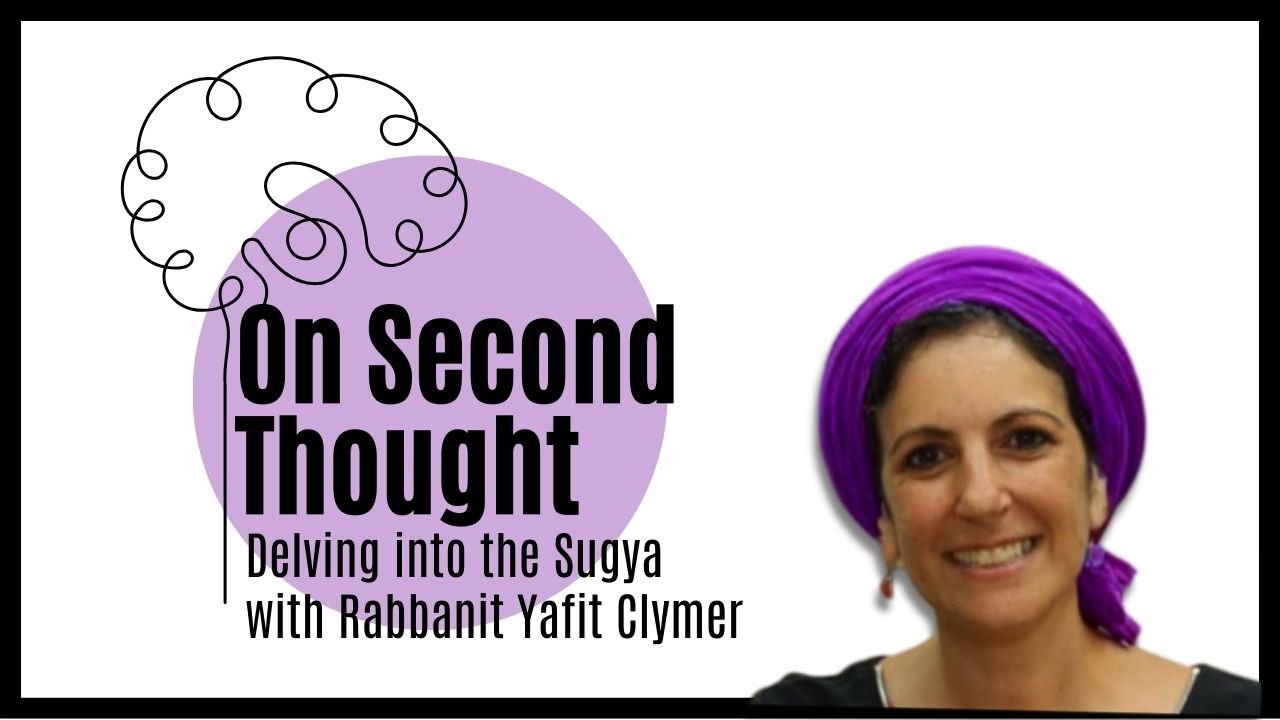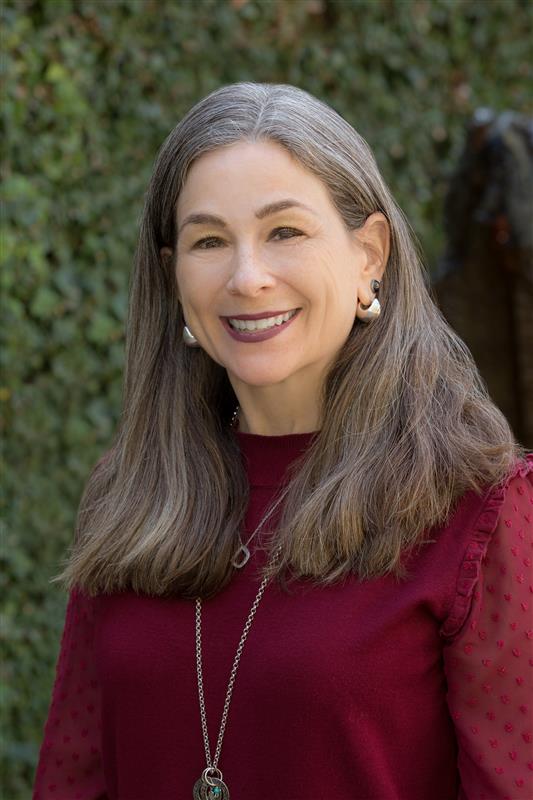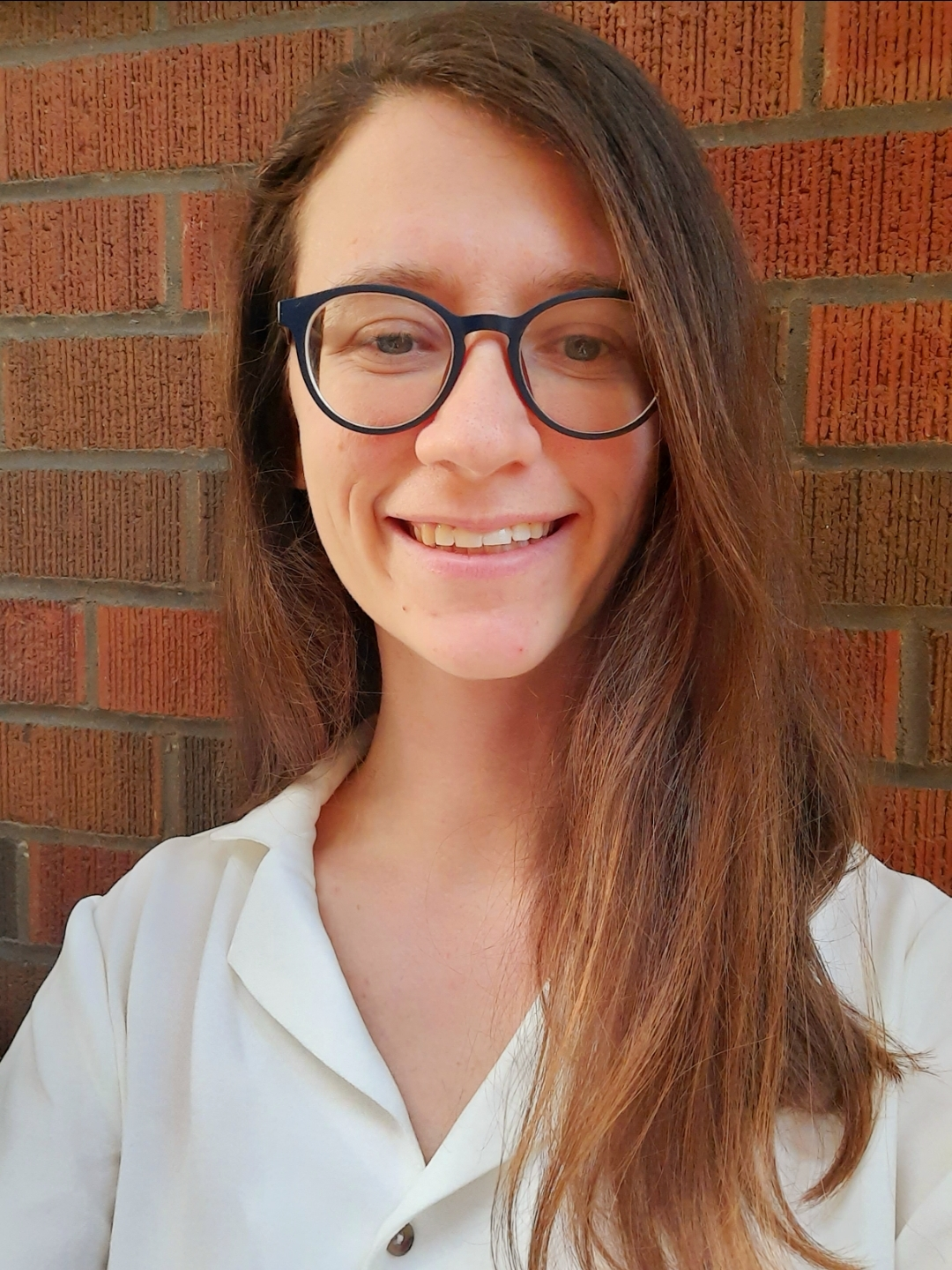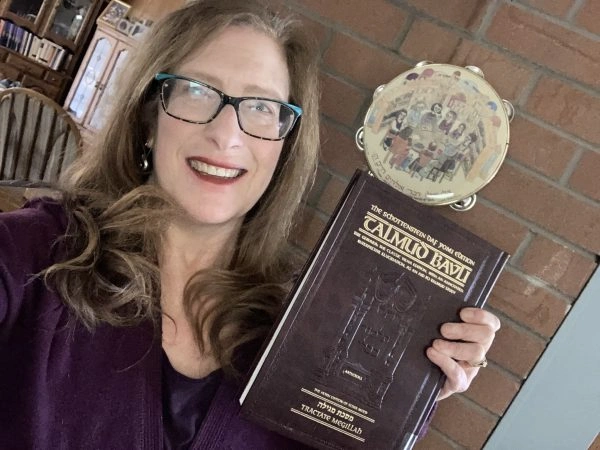Masechet Zevachim
Masechet Zevachim is sponsored by Esther Kremer in loving memory of her father, Manny Gross on his third yahrzeit. “He exemplified a path of holiness and purity, living with kedushah in his everyday life.”
This week’s learning is sponsored by Robert and Paula Cohen in loving memory of Joseph Cohen, Yosef ben Moshe HaCohen, z”l. “He was hard working, loved to sing, esp. as a chazan, and was very dedicated to his family and community.”
Want to dedicate learning? Get started here:


Summary
How can the verse “do not touch kodesh” be used by Reish Lakish to teach that one cannot eat sacrificial meat in a state of impurity, when that verse is needed to derive the prohibition for an impure person to eat sacrificial meat before the blood is sprinkled? To resolve the difficulty, the Gemara explains how both can be derived from the same verse.
There is a debate between Rabbi Yochanan and Reish Lakish regarding an impure person who eats sacrificial meat before the blood is sprinkled – is it punishable by lashes or not? Abaye and Rava disagree about the scope of the debate.
Rabbi Yochanan and Reish Lakish also disagree about whether one who brings parts of the body of a non-kosher animal onto the altar receives lashes or not. However, after raising a difficulty with this, they explain that all agree it is forbidden, but not punishable by lashes, as it is a negative commandment that is not written explicitly, but derived from a positive commandment. The debate is regarding a different, but similar issue – bringing a non-domesticated animal – is it a violation of a positive commandment, or is it only forbidden ab initio?
Three versions of a question are brought regarding shirayim. If a disqualified person accepted and sprinkled the blood, does it render the animal disqualified from being used for a sacrifice, e.g. can one take more blood from the animal and sprinkle it on the altar? Or, if a cup with the blood was taken out of the Azara, can one get more blood from the animal? Or, if multiple cups were used to get blood from the animal and one was used for the altar, does the blood from the other cups also get poured on the base of the altar (as shirayim)?
How does the Mishna allow for some mistakes to be rectified? Why are there three different cases like this mentioned in the Mishna – what is unique about each case?
Today’s daily daf tools:
Masechet Zevachim
Masechet Zevachim is sponsored by Esther Kremer in loving memory of her father, Manny Gross on his third yahrzeit. “He exemplified a path of holiness and purity, living with kedushah in his everyday life.”
This week’s learning is sponsored by Robert and Paula Cohen in loving memory of Joseph Cohen, Yosef ben Moshe HaCohen, z”l. “He was hard working, loved to sing, esp. as a chazan, and was very dedicated to his family and community.”
Today’s daily daf tools:
Delve Deeper
Broaden your understanding of the topics on this daf with classes and podcasts from top women Talmud scholars.
New to Talmud?
Check out our resources designed to help you navigate a page of Talmud – and study at the pace, level and style that fits you.
The Hadran Women’s Tapestry
Meet the diverse women learning Gemara at Hadran and hear their stories.
Zevachim 34
נְטִילַת נְשָׁמָה, אַף קוֹדֶשׁ – דָּבָר שֶׁיֵּשׁ בּוֹ נְטִילַת נְשָׁמָה. וְאִי בְּנוֹגֵעַ – נְטִילַת נְשָׁמָה מִי אִיכָּא?! אֶלָּא בַּאֲכִילָה.
the taking of a life, i.e., karet, so too, the matter pertaining to sacrificial food entails a punishment that involves the taking of a life. The Gemara explains: And if the prohibition is with regard to touching sacrificial food, is there a punishment that entails the taking of a life? Rather, the prohibition is with regard to eating.
וְאַכַּתִּי מִיבְּעֵי לֵיהּ לְטָמֵא שֶׁאָכַל בְּשַׂר קוֹדֶשׁ לִפְנֵי זְרִיקָה! דְּאִתְּמַר: טָמֵא שֶׁאָכַל בְּשַׂר קוֹדֶשׁ לִפְנֵי זְרִיקָה – רֵישׁ לָקִישׁ אָמַר: לוֹקֶה, וְרַבִּי יוֹחָנָן אָמַר: אֵינוֹ לוֹקֶה.
The Gemara asks: But this verse is still necessary for Reish Lakish to teach the halakha of a ritually impure person who ate sacrificial meat before the sprinkling of the blood of the offering on the altar, when the meat is not yet permitted. As it was stated: With regard to an impure individual who ate sacrificial meat before the sprinkling of the blood, Reish Lakish says: He is flogged for doing so, and Rabbi Yoḥanan says: He is not flogged.
רֵישׁ לָקִישׁ אָמַר לוֹקֶה – ״בְּכׇל קֹדֶשׁ לֹא תִגָּע״, לָא שְׁנָא לִפְנֵי זְרִיקָה וְלָא שְׁנָא לְאַחַר זְרִיקָה. רַבִּי יוֹחָנָן אָמַר אֵינוֹ לוֹקֶה – כִּדְתָנֵי בַּרְדְּלָא: אָתְיָא ״טוּמְאָתוֹ״–״טוּמְאָתוֹ״, וְכִי כְּתַב הָהוּא – לְאַחַר זְרִיקָה.
Reish Lakish says: He is flogged, as it is written: “Every consecrated item she shall not touch,” without limiting the prohibition to a specific time, indicating that it is no different if one eats the sacrificial meat prior to sprinkling the blood, and it is no different if one does so after sprinkling the blood. Rabbi Yoḥanan says: He is not flogged, as the Sage Bardela teaches that the prohibition is derived by means of the verbal analogy cited before, as the verse states “his impurity” with regard to an impure person who eats sacrificial food, and states “his impurity” with regard to an impure person entering the Temple. And when “his impurity” is written, it is with regard to partaking of sacrificial meat after the sprinkling of the blood (see Leviticus 7:20).
אִם כֵּן, לֵימָא קְרָא ״בְּקֹדֶשׁ״; מַאי ״בְּכׇל קֹדֶשׁ״? שְׁמַע מִינַּהּ תַּרְתֵּי.
The Gemara answers for Reish Lakish: If so, that the verse was referring only to partaking of sacrificial meat after the sprinkling of the blood, let the verse say: A consecrated item she shall not touch. What is the reason for using the phrase “every consecrated item”? Conclude two conclusions from it, i.e., it also includes not eating sacrificial meat before the sprinkling of the blood.
גּוּפָא – טָמֵא שֶׁאָכַל בְּשַׂר קוֹדֶשׁ לִפְנֵי זְרִיקָה, רֵישׁ לָקִישׁ אָמַר: לוֹקֶה, רַבִּי יוֹחָנָן אָמַר: אֵינוֹ לוֹקֶה. אָמַר אַבָּיֵי: מַחְלוֹקֶת בְּטוּמְאַת הַגּוּף, אֲבָל בְּטוּמְאַת בָּשָׂר – דִּבְרֵי הַכֹּל לוֹקֶה.
§ The Gemara discusses the matter itself: With regard to an impure individual who ate sacrificial meat before the sprinkling of the blood, Reish Lakish says: He is flogged for doing so, and Rabbi Yoḥanan says: He is not flogged. Abaye says: This dispute applies with regard to a case of impurity of the body of the one who eats the meat, but with regard to impurity of the flesh itself, i.e., if the sacrificial meat was ritually impure, all agree that he is flogged.
דְּאָמַר קְרָא: ״וְהַבָּשָׂר״ – לְרַבּוֹת עֵצִים וּלְבוֹנָה דְּלָאו בְּנֵי אֲכִילָה נִינְהוּ, וַאֲפִילּוּ הָכִי רַבִּינְהוּ קְרָא.
This is as the verse states: “And the flesh that touches any impure item shall not be eaten; it shall be burned with fire; and the flesh, every one that is pure may eat the flesh” (Leviticus 7:19). The Sages derived that the extra term “and the flesh” serves to include wood and frankincense, which are not fit for consumption, and even so the verse included them as being susceptible to impurity, and one who eats them while he is impure is flogged. Therefore, sacrificial meat before the sprinkling of the blood, which is fit for consumption, is certainly included in the prohibition.
וְרָבָא אָמַר: מַחְלוֹקֶת בְּטוּמְאַת הַגּוּף, אֲבָל בְּטוּמְאַת בָּשָׂר – דִּבְרֵי הַכֹּל אֵינוֹ לוֹקֶה. מַאי טַעְמָא? כֵּיוָן דְּלָא קָרֵינָא בֵּיהּ ״וְטוּמְאָתוֹ עָלָיו וְנִכְרְתָה״, לָא קָרֵינָא בֵּיהּ ״וְהַבָּשָׂר אֲשֶׁר יִגַּע בְּכׇל טָמֵא לֹא יֵאָכֵל״.
And Rava says: This dispute applies with regard to a case of impurity of the body, but with regard to impurity of the meat all agree that he is not flogged. What is the reason? Since one does not apply to meat before the sprinkling of the blood the verse: “But the soul that eats of the flesh of the sacrifice of peace offerings of the Lord, having his impurity upon him, that soul shall be cut off from his people” (Leviticus 7:20), which is referring to meat after the sprinkling of the blood, so too, one does not apply to it the prohibition: “And the flesh that touches any impure item shall not be eaten” (Leviticus 7:19).
וְהָאָמַר מָר: ״וְהַבָּשָׂר״ – לְרַבּוֹת עֵצִים וּלְבוֹנָה!
The Gemara challenges the statement of Rava: But doesn’t the Master say that the term “and the flesh” serves to include wood and frankincense that became impure as items that are forbidden to be eaten, despite the fact that they are not fit for consumption? Certainly, then, sacrificial flesh before the sprinkling of the blood should also be included in the category of items forbidden to be eaten.
הָכָא בְּמַאי עָסְקִינַן – כְּגוֹן שֶׁקָּדְשׁוּ בִּכְלִי, דְּנַעֲשָׂה כְּמִי שֶׁקָּרְבוּ כָּל מַתִּירָיו.
The Gemara answers: What are we dealing with here, that one would be liable for eating wood and frankincense that are impure? It is a case where the wood and frankincense were sanctified in a vessel, and the reason for the liability is that they are then considered like an item for which all of its permitting factors were sacrificed, such as flesh after the sprinkling of the blood, and only then is one liable for eating it while impure.
דִּתְנַן: כֹּל שֶׁיֵּשׁ לוֹ מַתִּירִים – מִשֶּׁקָּרְבוּ מַתִּירָיו. כֹּל שֶׁאֵין לוֹ מַתִּירִין – מִשֶּׁקָּדַשׁ בִּכְלִי.
This is as we learned in a mishna (Me’ila 10a): With regard to anything that has permitting factors, i.e., rites that must be performed or items that must be sacrificed before the meat of the offering may be eaten, such as the meat of an offering that is permitted to be eaten by the sprinkling of the blood; one is liable for eating it while impure from the time that its permitting factors were sacrificed. With regard to anything that does not have permitting factors, such as the handful removed from a meal offering and the frankincense, which themselves render the rest of the meal offering permitted for consumption, one is liable for eating it while impure from the time it is sanctified in a vessel.
אִיתְּמַר: הַמַּעֲלֶה אֵבְרֵי בְּהֵמָה טְמֵאָה עַל גַּבֵּי הַמִּזְבֵּחַ – רֵישׁ לָקִישׁ אָמַר: לוֹקֶה, רַבִּי יוֹחָנָן אָמַר: אֵינוֹ לוֹקֶה. רֵישׁ לָקִישׁ אָמַר לוֹקֶה – טְהוֹרָה אִין, טְמֵאָה לָא, וְלָאו הַבָּא מִכְּלַל עֲשֵׂה לוֹקִין עָלָיו. וְרַבִּי יוֹחָנָן אָמַר אֵין לוֹקִין עָלָיו – לָאו הַבָּא מִכְּלַל עֲשֵׂה אֵין לוֹקִין עָלָיו.
§ It was stated: In the case of one who offers up the limbs of a non-kosher animal upon the altar, Reish Lakish says: He is flogged for doing so, while Rabbi Yoḥanan says: He is not flogged. The Gemara explains the logic for each opinion: Reish Lakish says that he is flogged, because there is a positive mitzva to sacrifice an offering from the herd and the flock (see Leviticus 1:2), which are kosher animals. Therefore, it can be inferred that a kosher animal, yes, one may sacrifice, but a non-kosher animal one may not sacrifice, and one who transgresses a prohibition that stems from a positive mitzva is flogged for it. And Rabbi Yoḥanan says: One is not flogged for it, as one who transgresses a prohibition that stems from a positive mitzva is not flogged for it.
מוֹתֵיב רַבִּי יִרְמְיָה: ״אֹתָהּ תֹּאכֵלוּ״ – וְלֹא בְּהֵמָה טְמֵאָה; וְלָאו הַבָּא מִכְּלַל עֲשֵׂה, עֲשֵׂה.
Rabbi Yirmeya raises an objection to the opinion of Reish Lakish from a baraita cited in Torat Kohanim: “Whatsoever parts the hoof, and is wholly cloven-footed, and chews the cud, among the beasts, that may you eat” (Leviticus 11:3). One can infer: But you may not eat a non-kosher animal; and a prohibition that stems from a positive mitzva has the status of a positive mitzva.
אֲמַר לֵיהּ רַבִּי יַעֲקֹב לְרַבִּי יִרְמְיָה בַּר תַּחְלִיפָא, אַסְבְּרַהּ לָךְ: בְּאֵבְרֵי בְּהֵמָה טְמֵאָה – דְּכוּלֵּי עָלְמָא לָא פְּלִיגִי. כִּי פְלִיגִי – בְּחַיָּה; וְהָכִי אִיתְּמַר: רַבִּי יוֹחָנָן אָמַר: עוֹבֵר בַּעֲשֵׂה, רֵישׁ לָקִישׁ אָמַר: אֵינוֹ עוֹבֵר בִּוְלֹא כְּלוּם.
Rabbi Ya’akov said to Rabbi Yirmeya bar Taḥlifa: I will explain it to you: With regard to one who sacrifices the limbs of a non-kosher animal upon the altar, everyone agrees that he is not flogged, as he violates only a positive mitzva. When they disagree, it is with regard to one who sacrifices a kosher undomesticated animal on the altar, and it was stated like this: Rabbi Yoḥanan says: He transgresses a positive mitzva. Reish Lakish says: He does not transgress anything.
רַבִּי יוֹחָנָן אָמַר עוֹבֵר בַּעֲשֵׂה – בְּהֵמָה אִין, חַיָּה לָא. רֵישׁ לָקִישׁ אָמַר אֵינוֹ עוֹבֵר עָלָיו בִּוְלֹא כְּלוּם – הָהוּא לְמִצְוָה.
The Gemara explains their reasoning: Rabbi Yoḥanan says: He transgresses a positive mitzva, since the Torah commanded that a domesticated animal, yes, should be sacrificed, from which it can be inferred that an undomesticated animal may not be sacrificed, and a prohibition that stems from a positive mitzva has the status of a positive mitzva. Reish Lakish says: He does not transgress anything, since that verse which instructs one to sacrifice offerings from the herd and the flock is referring to the optimal manner of fulfilling the mitzva, but if he sacrificed an undomesticated animal, he has not transgressed the mitzva.
מוֹתֵיב רָבָא: אִילּוּ נֶאֱמַר ״קׇרְבָּן לַה׳ בְּהֵמָה״ – הָיִיתִי אוֹמֵר: חַיָּה בִּכְלַל בְּהֵמָה, כְּעִנְיָן שֶׁנֶּאֱמַר: ״זֹאת הַבְּהֵמָה אֲשֶׁר תֹּאכֵלוּ שׁוֹר שֵׂה כְשָׂבִים וְשֵׂה עִזִּים אַיָּל וּצְבִי וְגוֹ׳״. תַּלְמוּד לוֹמַר: ״בָּקָר וָצֹאן״ – בָּקָר וָצֹאן אָמַרְתִּי לְךָ, וְלֹא חַיָּה.
Rava raised an objection from a baraita: Had the verse (Leviticus 1:2) stated only: When any man of you brings an offering to the Lord, animals [behema], I would say that even an undomesticated animal is included in the category of an animal [behema], like that which is stated: “These are the animals [behema] that you may eat: The ox, the sheep, and the goat, the deer, and the gazelle, and the fallow deer, and the wild goat, and the oryx, and the aurochs, and the mountain sheep” (Deuteronomy 14:4–5), and, for example, the deer and gazelle are undomesticated animals. Therefore, the verse states: “From animals, from the cattle and from the flock” (Leviticus 1:2), which indicates that God says: I have told you to bring offerings from the cattle and the flock, but not an undomesticated animal.
יָכוֹל לֹא יָבִיא, וְאִם הֵבִיא כָּשֵׁר? הָא לְמָה זֶה דּוֹמֶה – לְתַלְמִיד שֶׁאָמַר לוֹ רַבּוֹ ״הָבֵא לִי חִטִּים״, וְהֵבִיא לוֹ חִטִּים וּשְׂעוֹרִים, שֶׁאֵינוֹ כְּמַעֲבִיר עַל דְּבָרָיו אֶלָּא מוֹסִיף עַל דְּבָרָיו, וְכָשֵׁר.
One might have thought that one should not bring an undomesticated animal ab initio, but if one did bring it, it is valid, and to what is this comparable? To a student whose teacher says to him: Bring me wheat, and the student brought him wheat and barley. In this case, it is not as though the student is disobeying the statement of the teacher; rather, he is merely adding to his statement, and that should be valid.
תַּלְמוּד לוֹמַר: ״בָּקָר וָצֹאן״ – בָּקָר וָצֹאן אָמַרְתִּי לְךָ, וְלֹא חַיָּה. הָא לְמָה זֶה דּוֹמֶה? לְתַלְמִיד שֶׁאָמַר לוֹ רַבּוֹ ״אַל תָּבִיא לִי אֶלָּא חִיטִּין״, וְהֵבִיא לוֹ חִיטִּין וּשְׂעוֹרִים, שֶׁאֵינוֹ כְּמוֹסִיף עַל דְּבָרָיו אֶלָּא כְּמַעֲבִיר עַל דְּבָרָיו,
Therefore, the verse states again: “From the cattle” (Leviticus 1:3), and: “From the flock” (Leviticus 1:10), to reiterate that God says: I have told you to bring offerings from the cattle and the flock, but not an undomesticated animal. To what is this comparable? To a student whose teacher told him: Bring me only wheat, and the student brought him wheat and barley. It is not as though the student is adding to the statement of the teacher; rather, it is as though he is disobeying his statement, since his teacher instructed him to bring only wheat. Consequently, one who sacrifices an undomesticated animal does not merely add to a mitzva of the Torah, but also violates a prohibition,
וּפָסוּל. תְּיוּבְתָּא דְּרֵישׁ לָקִישׁ! תְּיוּבְתָּא.
and the offering is therefore disqualified. The Gemara concludes: The refutation of the opinion of Reish Lakish is indeed a conclusive refutation.
וְכוּלָּן שֶׁקִּיבְּלוּ כּוּ׳. בְּעָא מִינֵּיהּ רֵישׁ לָקִישׁ מֵרַבִּי יוֹחָנָן: פָּסוּל – מַהוּ שֶׁיַּעֲשֶׂה שִׁירַיִם?
§ The mishna teaches: And with regard to all of them, in a case where they collected the blood with the intent to offer it beyond its designated time or outside its designated area, if there is blood of the soul that remains in the animal, the priest fit for Temple service should again collect the blood and sprinkle it on the altar. Reish Lakish asked Rabbi Yoḥanan: If an individual unfit for Temple service presented the blood, what is the halakha with regard to the blood that remains in the animal? Does the fact that he presented some blood render the rest of it a remainder and no longer fit to be presented, or perhaps the presenting performed by an unfit individual is not considered valid, and therefore a priest fit for Temple service may present the blood again?
אֲמַר לֵיהּ: אֵין עוֹשֶׂה שִׁירַיִם אֶלָּא חוּץ לִזְמַנּוֹ וְחוּץ לִמְקוֹמוֹ, הוֹאִיל וּמְרַצֶּה לְפִיגּוּלוֹ.
Rabbi Yoḥanan said to him: An invalid presenting does not render the rest of the blood a remainder unless it is a case where a priest fit for Temple service presented the blood with the intent to offer it beyond its designated time or outside its designated area, since it is only in that case that the presenting of the blood effects acceptance, i.e., it is considered a valid presenting, with regard to rendering the offering piggul, i.e., an offering that was sacrificed with the intent to consume it after its designated time.
רַב זְבִיד מַתְנֵי הָכִי – בְּעָא מִינֵּיהּ רֵישׁ לָקִישׁ מֵרַבִּי יוֹחָנָן: כּוֹס פָּסוּל, מַהוּ שֶׁיַּעֲשֶׂה שִׁירַיִם? אֲמַר לֵיהּ: פָּסוּל גּוּפֵיהּ מַאי סְבִירָא לָךְ? אִי פָּסוּל מְשַׁוֵּי שִׁירַיִם – כּוֹס פָּסוּל נָמֵי מְשַׁוֵּי שִׁירַיִם. אִי פָּסוּל לָא מְשַׁוֵּי שִׁירַיִם – כּוֹס פָּסוּל נָמֵי לָא מְשַׁוֵּי שִׁירַיִם.
Rav Zevid teaches the matter in this way: Reish Lakish asked Rabbi Yoḥanan: Concerning a cup of disqualified blood, e.g., one which had been taken out of the Temple courtyard and was then nevertheless presented on the altar, what is the halakha with regard to it rendering the remaining blood a remainder and unfit to be presented? Rabbi Yoḥanan said to him: In the case of an unfit individual who himself presented the blood, what do you hold to be the halakha? If an unfit individual who presented the blood renders the remaining blood a remainder, then a cup of disqualified blood should also render the remaining blood a remainder. If an unfit individual does not render the remaining blood a remainder, then a cup of disqualified blood should also not render the remaining blood a remainder.
רַב יִרְמְיָה מִדִּיפְתִּי מַתְנֵי הָכִי – בְּעָא מִינֵּיהּ אַבָּיֵי (מֵרָבָא) [מֵרַבָּה]: כּוֹס, מַהוּ שֶׁיַּעֲשֶׂה אֶת חֲבֵירוֹ דָּחוּי אוֹ שִׁירַיִם?
Rav Yirmeya of Difti teaches the discussion this way: Abaye asked Rabba: If the blood was collected in more than one cup and the presenting of the blood on the corners of the altar was performed with one cup, what is the halakha? Does the cup render the blood of the other cup rejected, and it is therefore poured into the drain running through the Temple courtyard, or does it render it a remainder, which is poured on the base of the altar?
אֲמַר לֵיהּ: פְּלוּגְתָּא דְּרַבִּי אֶלְעָזָר בְּרַבִּי שִׁמְעוֹן וְרַבָּנַן. דְּתַנְיָא, לְמַעְלָה הוּא אוֹמֵר: ״אֶת דָּמוֹ יִשְׁפֹּךְ״, לְמַטָּה הוּא אוֹמֵר: ״וְאֶת כׇּל דָּמָהּ יִשְׁפֹּךְ״.
Rabba said to him: This is a dispute between Rabbi Elazar, son of Rabbi Shimon, and the Rabbis. As it is taught in a baraita with regard to the remainder of the blood of the external sin offering: In the verse above, discussing the sin offering of a Nasi, it states: “And he shall pour its blood out at the base of the altar of the burnt offering” (Leviticus 4:25). In the verse below, discussing the sin offering of an individual, it states: “And he shall pour all its blood out at the base of the altar” (Leviticus 4:30).
מִנַּיִן לְחַטָּאת שֶׁקִּיבֵּל דָּמָהּ בְּאַרְבָּעָה כּוֹסוֹת, וְנָתַן מַתָּנָה אַחַת מִזֶּה וּמַתָּנָה אַחַת מִזֶּה – שֶׁכּוּלָּן נִשְׁפָּכִין לַיְסוֹד? תַּלְמוּד לוֹמַר: ״וְאֶת כׇּל דָּמָהּ יִשְׁפֹּךְ״.
The discrepancy between the first verse and the second verse, which contains the additional term “all,” is explained as follows: From where is it derived with regard to a sin offering which the priest collected its blood in four cups and placed one placement of blood onto the altar from this cup, and one placement of blood from that cup, and likewise for all four corners of the altar, that the remainder of blood from all the cups are poured out onto the base of the altar? The verse states: “And he shall pour all its blood.”
יָכוֹל נָתַן אַרְבַּע מַתָּנוֹת מִכּוֹס אֶחָד, יְהוּ כּוּלָּן נִשְׁפָּכִין לַיְסוֹד? תַּלְמוּד לוֹמַר: ״וְאֶת דָּמוֹ״. הָא כֵּיצַד? הוּא נִשְׁפָּךְ לַיְסוֹד, וְהֵן נִשְׁפָּכִין לָאַמָּה.
One might have thought that if he placed four placements of blood of the sin offering from one cup, the blood in all the rest of the cups should be poured onto the base of the altar. Therefore, the verse states: “And he shall pour its blood,” and not all of its blood. How so? Only that blood in the cup from which blood was properly presented on the altar is poured onto the base of the altar, and the rest of the cups of blood are rejected and are poured into the Temple courtyard drain.
רַבִּי אֶלְעָזָר בְּרַבִּי שִׁמְעוֹן אוֹמֵר: מִנַּיִן לְחַטָּאת שֶׁקִּיבֵּל דָּמָה בְּאַרְבָּעָה כּוֹסוֹת וְנָתַן אַרְבַּע מַתָּנוֹת מִכּוֹס אֶחָד, שֶׁכּוּלָּן נִשְׁפָּכִין לַיְסוֹד? תַּלְמוּד לוֹמַר: ״וְאֶת כׇּל דָּמָהּ יִשְׁפֹּךְ״. וְהָכְתִיב: ״וְאֶת דָּמוֹ יִשְׁפֹּךְ״! אָמַר רַב אָשֵׁי: הָהוּא לְמַעוֹטֵי שִׁירַיִם שֶׁבְּצַוַּאר בְּהֵמָה.
The baraita continues: Rabbi Elazar, son of Rabbi Shimon, says: From where is it derived with regard to a sin offering which the priest collected its blood in four cups and then placed four placements from one cup, that the blood from all the cups are poured out onto the base of the altar? The verse states: “And he shall pour all its blood.” The Gemara asks: But isn’t it written: “And he shall pour its blood,” which indicates that not all of the blood is poured? Rav Ashi said: That verse serves to exclude the remainder that is in the throat of the animal that was never collected in a vessel to be presented, which is not poured onto the base of the altar but into the Temple courtyard drain.
קִיבֵּל הַכָּשֵׁר וְנָתַן לַפָּסוּל כּוּ׳.
§ The mishna discussed three similar cases: If the priest fit for Temple service collected the blood in a vessel and gave the vessel to an unfit person, that person should return it to the fit priest. If the priest collected the blood in a vessel in his right hand and moved it to his left hand, he should return it to his right hand. If the priest collected the blood in a sacred vessel and placed it in a non-sacred vessel, he should return the blood to a sacred vessel.
וּצְרִיכָא; דְּאִי אַשְׁמְעִינַן פָּסוּל, הֲוָה אָמֵינָא: מַאי ״פָּסוּל״ – טָמֵא, דַּחֲזֵי לַעֲבוֹדַת צִיבּוּר; אֲבָל שְׂמֹאל – לָא.
The Gemara comments: And it was necessary to mention all of these cases, as had the mishna taught us only the case where he gave the blood to an unfit individual, I would say: What does the term: Unfit, mean? It means an impure priest, who is not completely unfit, as he is fit for communal service in the Temple when the priests or the entire community are impure, and that is why the blood is not disqualified; but if the priest moved the blood to his left hand, which under no circumstances may be used to perform the rite of collecting and carrying the blood, it is no longer valid.
וְאִי אַשְׁמְעִינַן שְׂמֹאל – דְּאִית לֵיהּ הֶכְשֵׁירָא בְּיוֹם הַכִּיפּוּרִים; אֲבָל כְּלֵי חוֹל – לָא.
And had the mishna taught us only with regard to moving the blood to his left hand that he should return it to his right hand and present it, one would assume that the reason is that the left hand has validity on Yom Kippur, since the High Priest carries the spoon of incense with his left hand, but if he poured the blood into a non-sacred vessel then it is not valid.
וְאִי אַשְׁמְעִינַן כְּלֵי חוֹל – מִשּׁוּם דַּחֲזוּ לְקַדּוֹשִׁינְהוּ; אֲבָל הָנָךְ – אֵימָא לָא. צְרִיכָא.
And had the mishna taught us only with regard to a non-sacred vessel that the blood is not disqualified, one could suggest that perhaps it is because the vessels are suitable to be consecrated, but with regard to these, i.e., an unfit individual and the left hand, which have no possibility of becoming fit for service, say that the blood does not remain valid. Therefore, it is necessary for all of the cases to be mentioned.
וְלֶיהֱוֵי לֵיהּ דָּחוּי! אֲמַר לֵיהּ רָבִינָא לְרַב אָשֵׁי, הָכִי אָמַר רַב יִרְמְיָה מִדִּיפְתִּי מִשְּׁמֵיהּ דְּרָבָא: הָא מַנִּי – חָנָן הַמִּצְרִי הוּא, דְּלֵית לֵיהּ דְּחוּיִין.
§ The Gemara questions the actual halakha: But let the blood be considered rejected when placed in the hand of the unfit individual, the left hand, or the non-sacred vessel. Ravina said to Rav Ashi: This is what Rav Yirmeya of Difti says in the name of Rava: In accordance with whose opinion is this mishna? It is in accordance with the opinion of Ḥanan the Egyptian, who does not subscribe to the halakha of rejection, but holds that a sacrifice that was rejected temporarily is not rejected entirely.
דְּתַנְיָא, חָנָן הַמִּצְרִי אוֹמֵר: אֲפִילּוּ דָּם בַּכּוֹס, מֵבִיא חֲבֵירוֹ וּמְזַוֵּוג לוֹ.
This is as it is taught in a baraita: Ḥanan the Egyptian says: In the event that the scapegoat of Yom Kippur was lost, even if the blood of its partner that is sacrificed to God has already been collected in the cup, the blood is not rejected, but rather he brings another scapegoat as its counterpart, and pairs it with the goat that has already been slaughtered, and the blood is sprinkled.
רַב אָשֵׁי אָמַר: כֹּל שֶׁבְּיָדוֹ – לָא הָוֵי דָּחוּי.
Rav Ashi says that there is another explanation to the mishna: Anything that is in his power to rectify is not considered rejected, as in these cases where he can simply return the blood to its proper place.
אָמַר רַב שַׁיָּיא: כְּוָותֵיהּ דְּרַב אָשֵׁי מִסְתַּבְּרָא. מַאן שָׁמְעַתְּ לֵיהּ דְּאִית לֵיהּ דְּחוּיִין – רַבִּי יְהוּדָה; דִּתְנַן, וְעוֹד אָמַר רַבִּי יְהוּדָה: נִשְׁפַּךְ הַדָּם – יָמוּת הַמִּשְׁתַּלֵּחַ, מֵת הַמִּשְׁתַּלֵּחַ – יִשָּׁפֵךְ הַדָּם;
Rav Shaya said: It is reasonable to explain the mishna in accordance with the opinion of Rav Ashi, as whom have you heard who accepts the reasoning of rejection? It is Rabbi Yehuda, as we learned in a mishna (Yoma 62a): And furthermore, Rabbi Yehuda said: If the blood of the goat sacrificed to God spilled from the cup before it was sprinkled, the scapegoat is left to die. Similarly, if the scapegoat died, the blood of the goat sacrificed to God should be spilled, and two other goats are used. Consequently, Rabbi Yehuda holds that the scapegoat, or in the opposite case, the blood of the goat to be sacrificed to God, is totally rejected.
וְשָׁמְעִינַן לֵיהּ דְּאָמַר: כֹּל שֶׁבְּיָדוֹ – לָא הָוֵי דָּחוּי. דְּתַנְיָא, רַבִּי יְהוּדָה אוֹמֵר: כּוֹס אֶחָד הָיָה מְמַלֵּא מִדַּם הַתַּעֲרוֹבֶת, וְזוֹרְקוֹ זְרִיקָה אַחַת כְּנֶגֶד הַיְסוֹד. שְׁמַע מִינַּהּ: כֹּל שֶׁבְּיָדוֹ – לָא הָוֵי דָּחוּי! שְׁמַע מִינַּהּ.
And yet, we have heard that Rabbi Yehuda says: Anything that is in his power to rectify is not rejected. As it is taught in a baraita: Rabbi Yehuda says: A priest would fill one cup with blood of the many Paschal offerings brought that day that was now mixed together on the floor and then sprinkle it with a single sprinkling against the base of the altar. Conclude from the baraita that Rabbi Yehuda holds that although the blood originally spilled from the cup, anything that is in his power to rectify is not rejected. The Gemara affirms: Conclude from it that it is so.
גּוּפָא – תַּנְיָא, רַבִּי יְהוּדָה אוֹמֵר: כּוֹס אֶחָד הָיָה מְמַלֵּא מִדַּם הַתַּעֲרוֹבֶת, שֶׁאִם יִשָּׁפֵךְ אֶחָד מֵהֶם – נִמְצָא שֶׁהוּא מַכְשִׁירוֹ. אָמְרוּ לוֹ לְרַבִּי יְהוּדָה: וַהֲלֹא לֹא נִתְקַבֵּל בִּכְלִי! מְנָא יָדְעִי? אֶלָּא שֶׁמָּא לֹא נִתְקַבֵּל בִּכְלִי! אָמַר לָהֶן:
§ The Gemara discusses the matter itself: It is taught in a baraita: Rabbi Yehuda says: A priest would fill one cup with the mixed blood, so that if one of the cups with the collected blood of one of the Paschal offerings were to spill, it would be found that this cup of the mixed blood that was sprinkled would render the sacrifice valid. The Rabbis said to Rabbi Yehuda: But the mixed blood was not collected in a vessel. The Gemara asks: From where do the Rabbis know that the blood was not collected in a vessel? Perhaps it was collected and it spilled out. Rather, this is what they are saying: Perhaps it was not collected in a vessel. Rabbi Yehuda said to them:
























